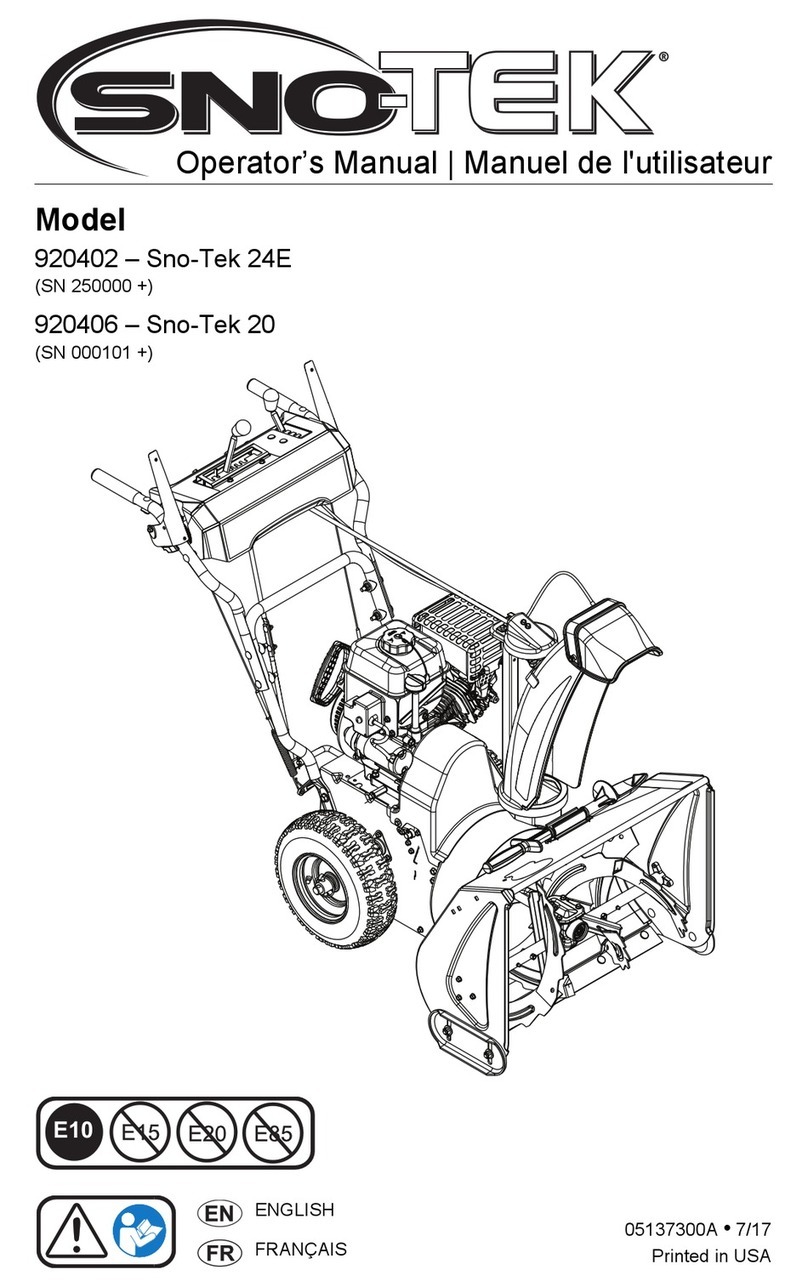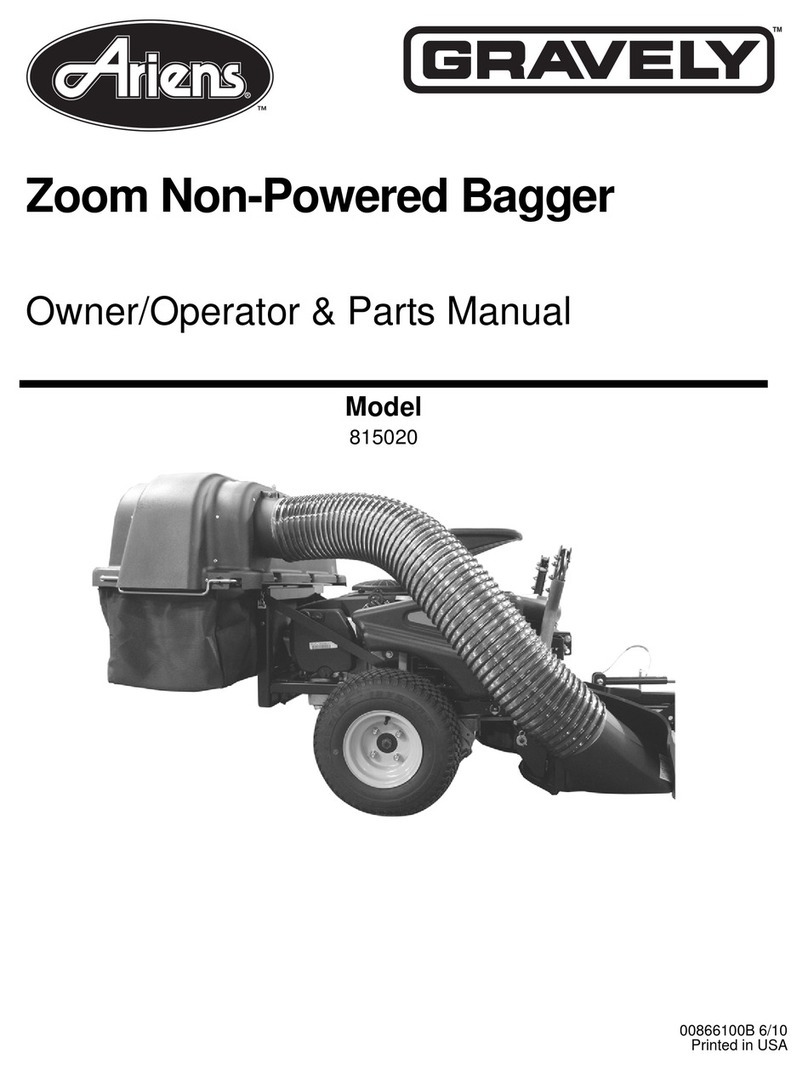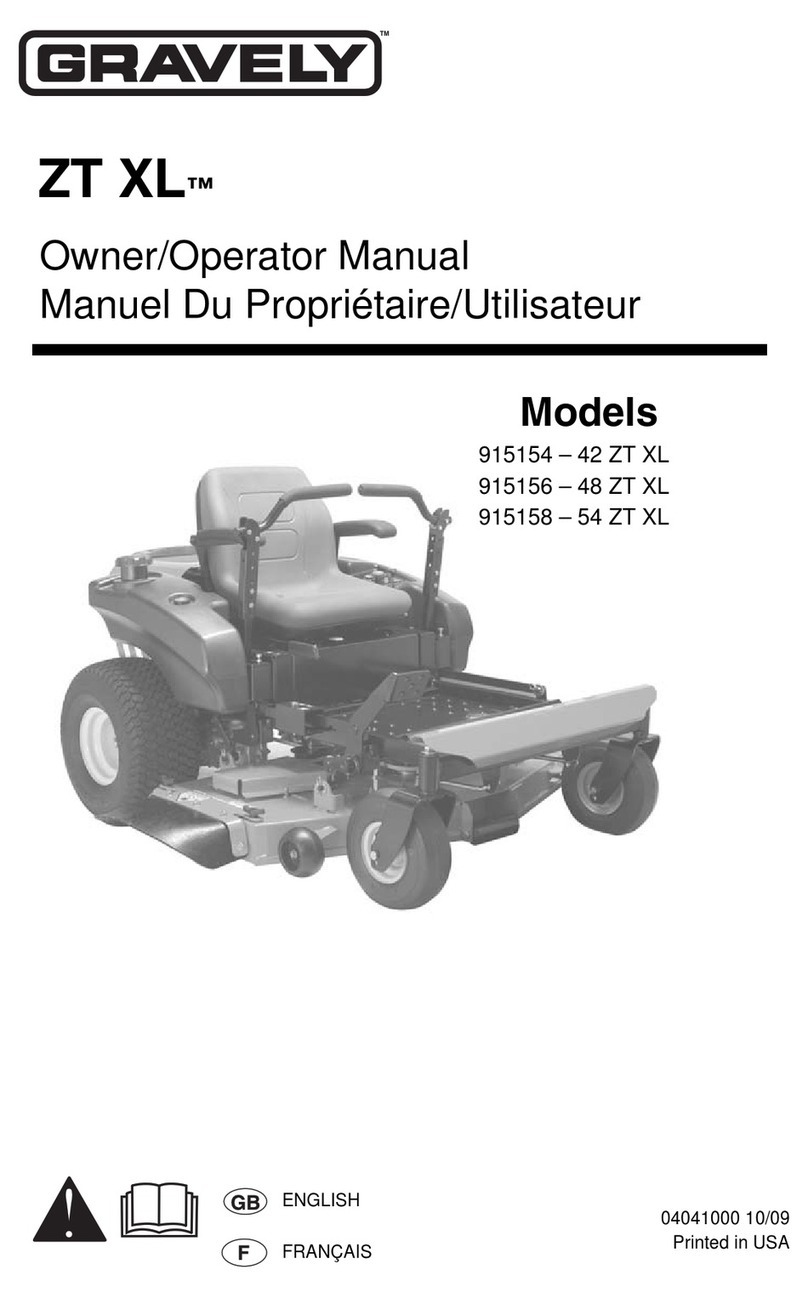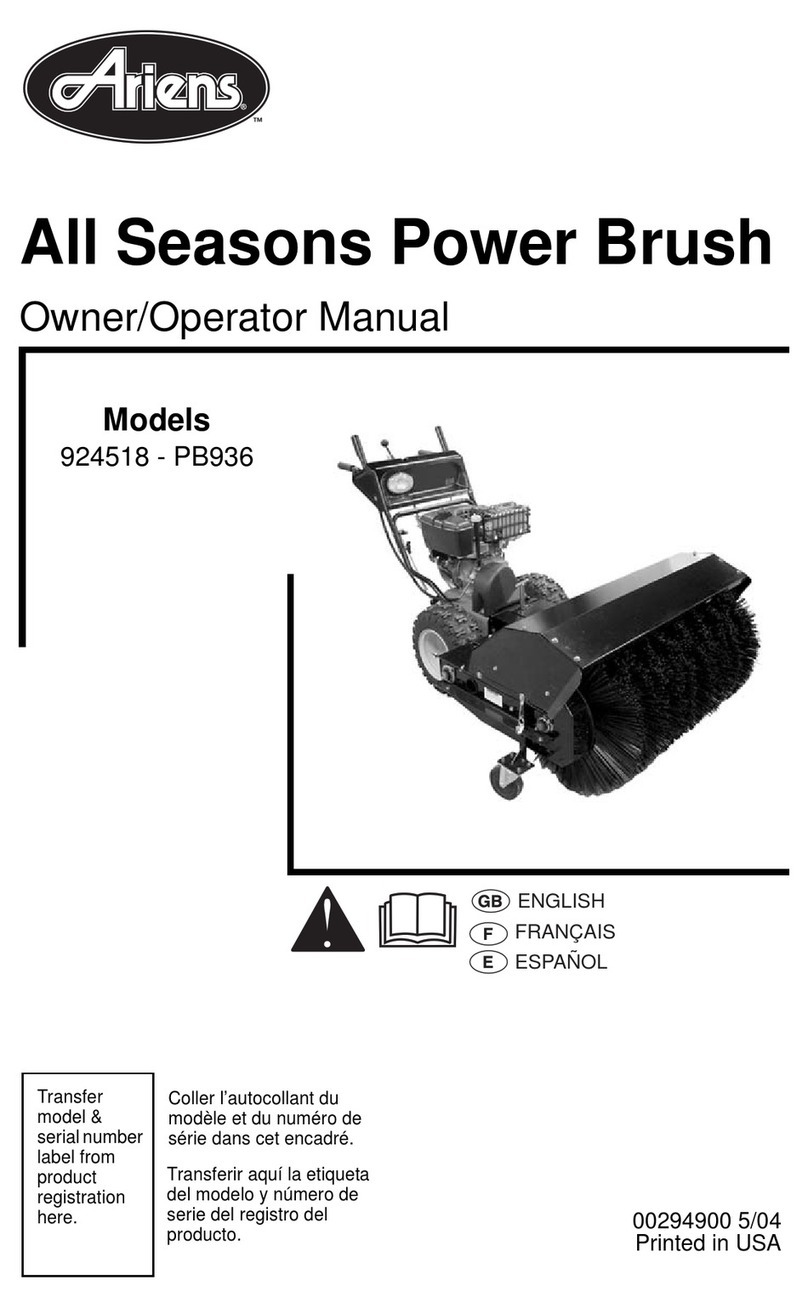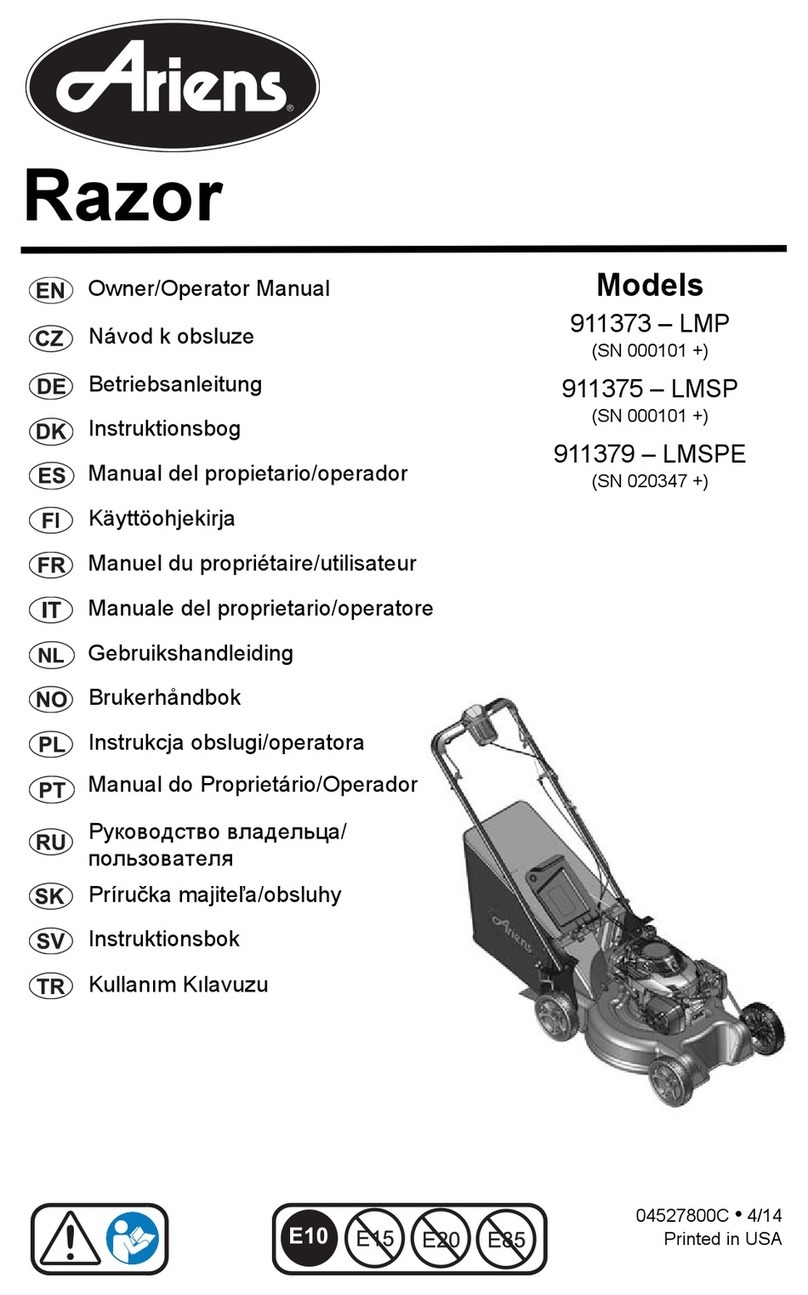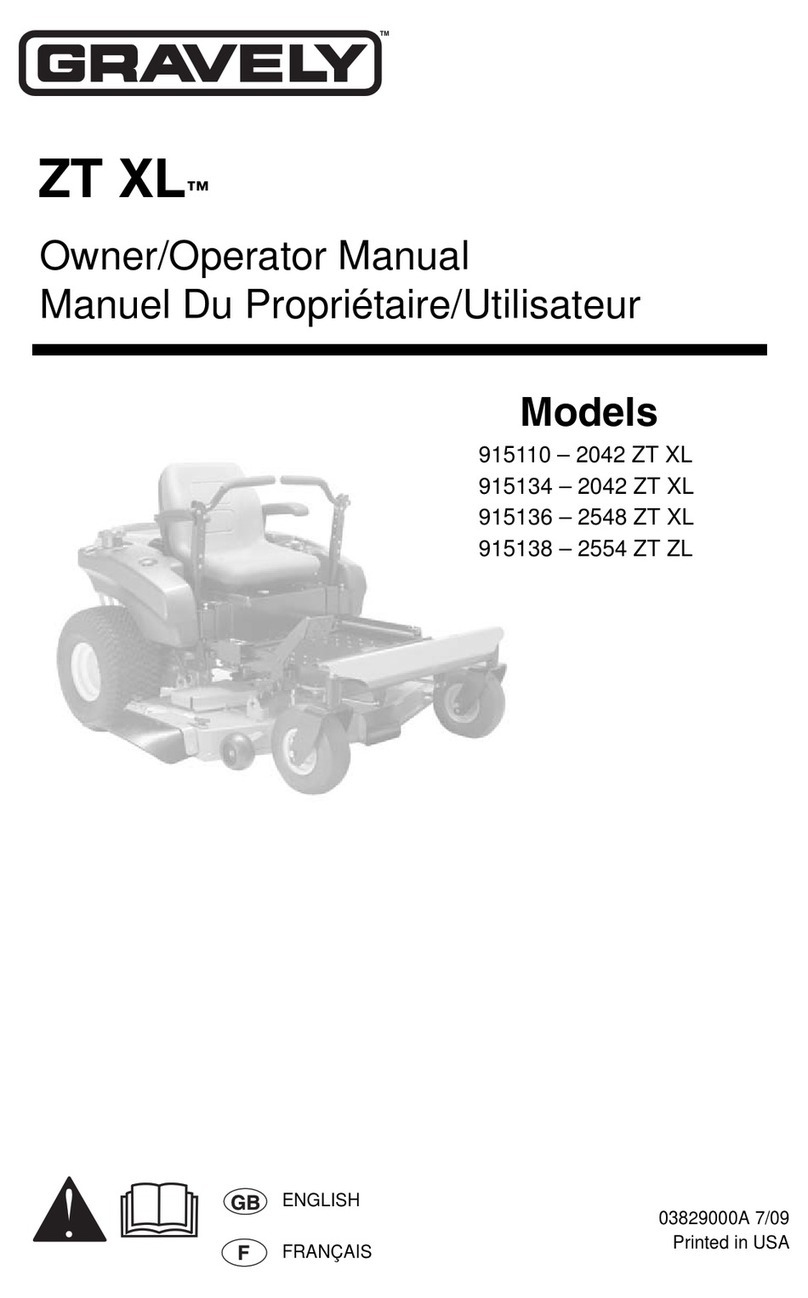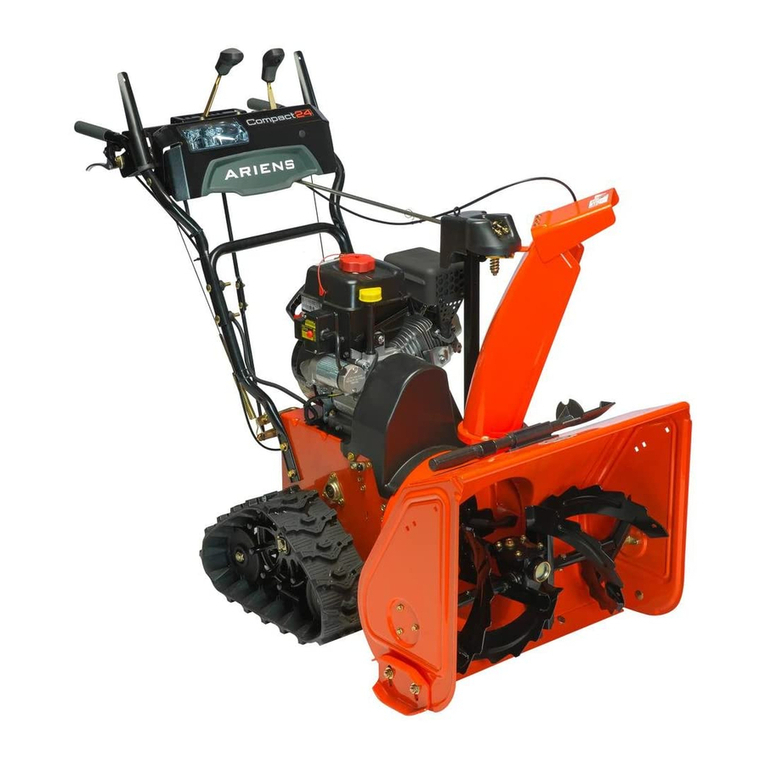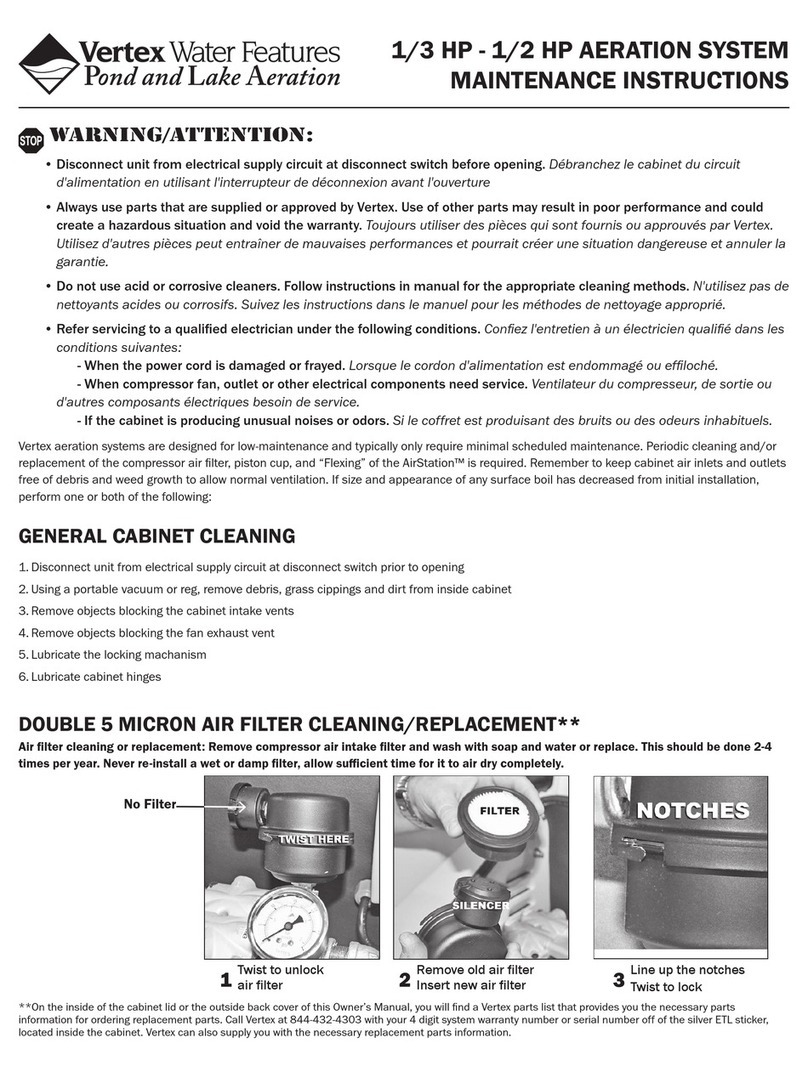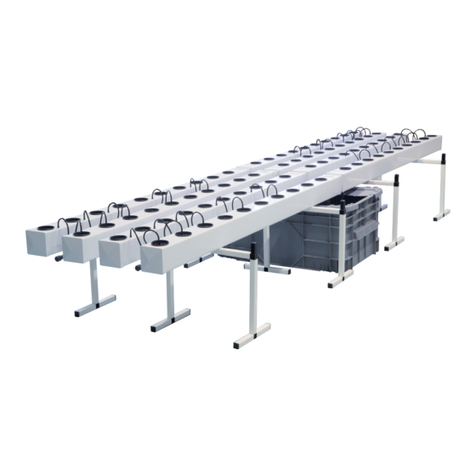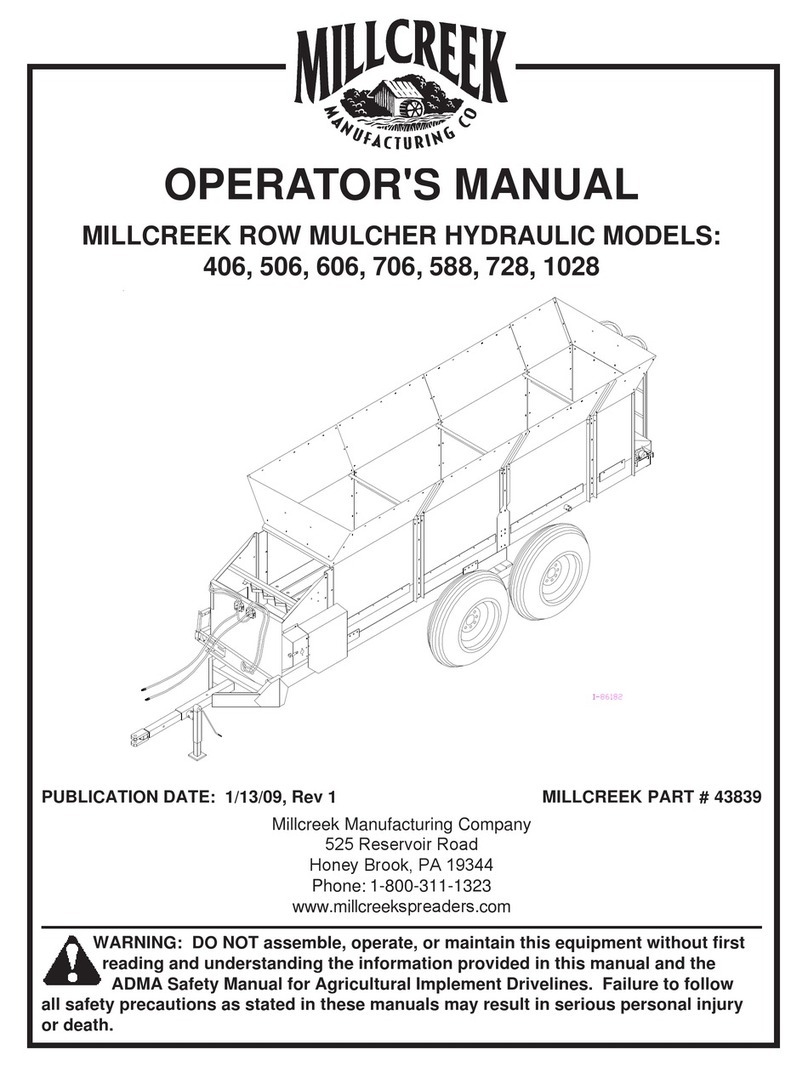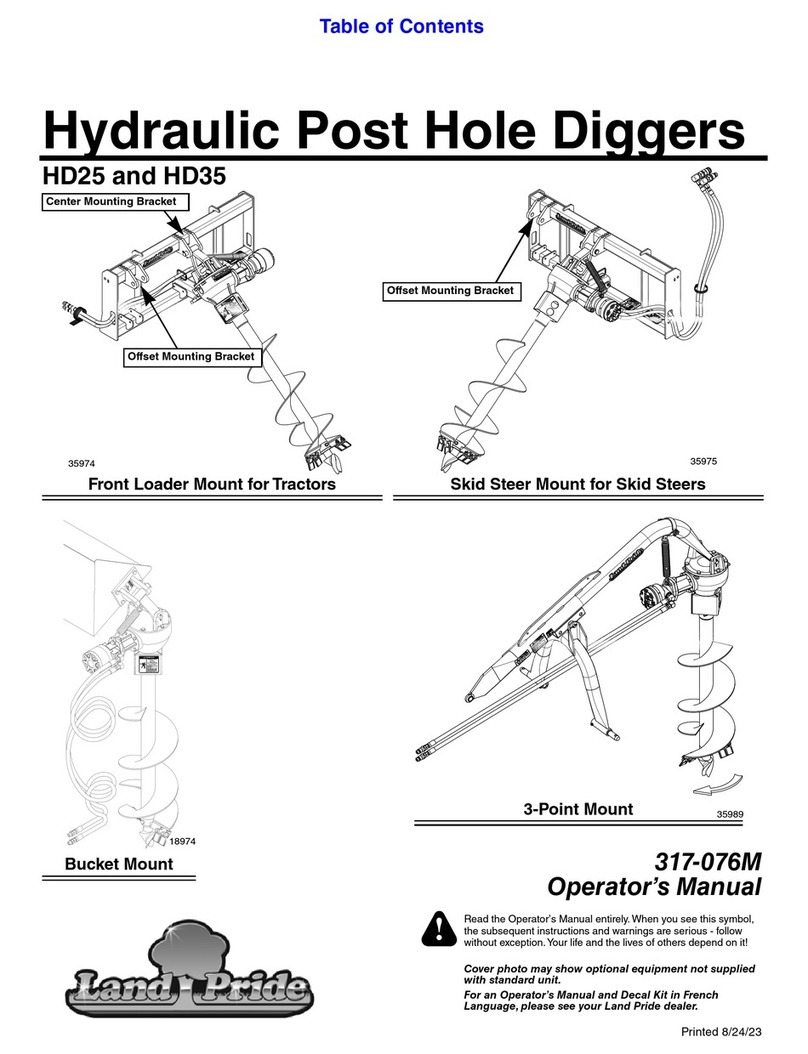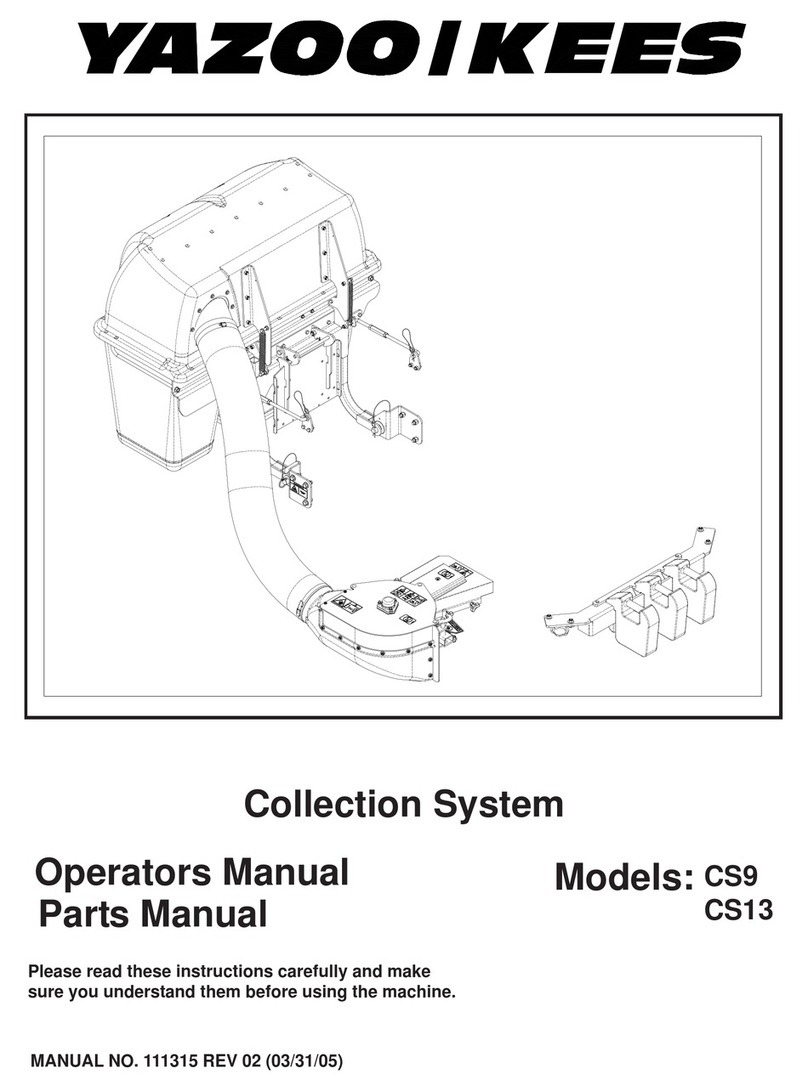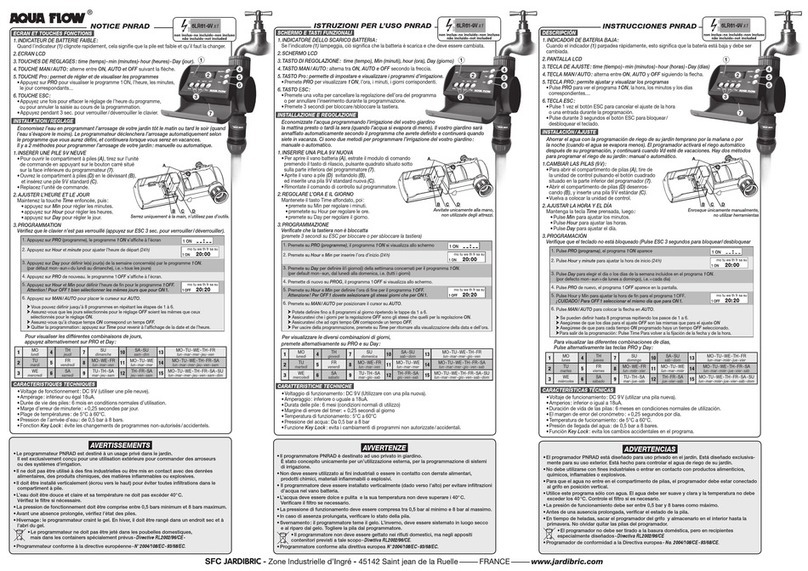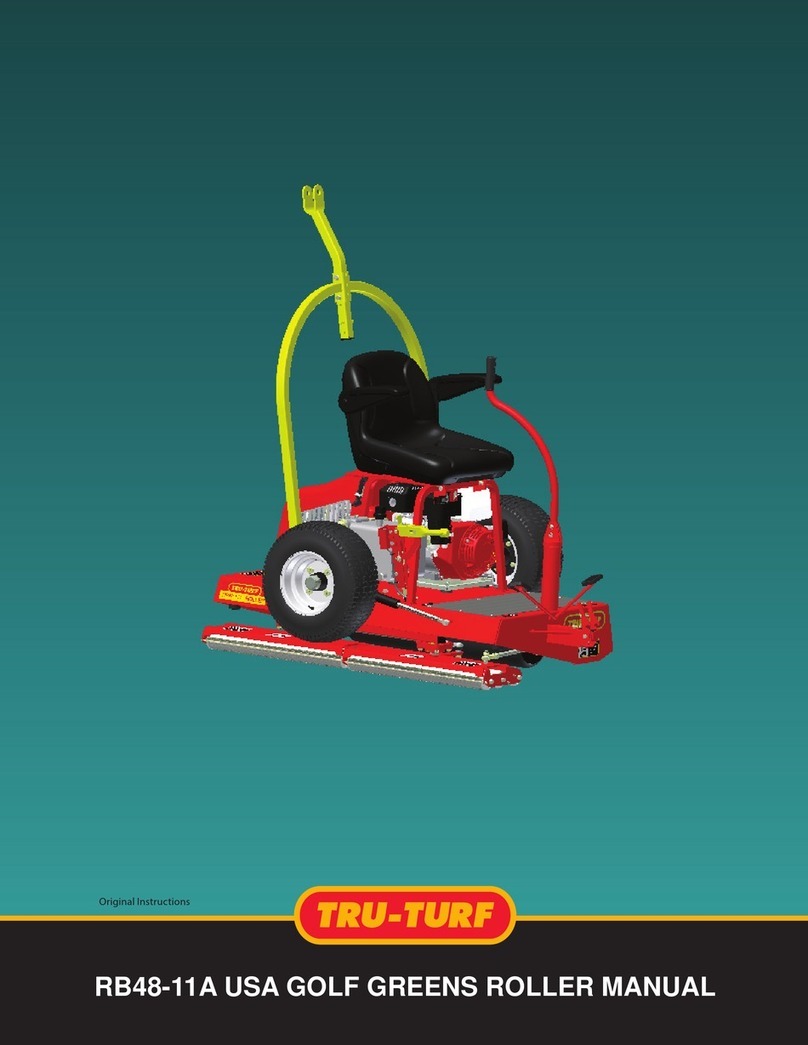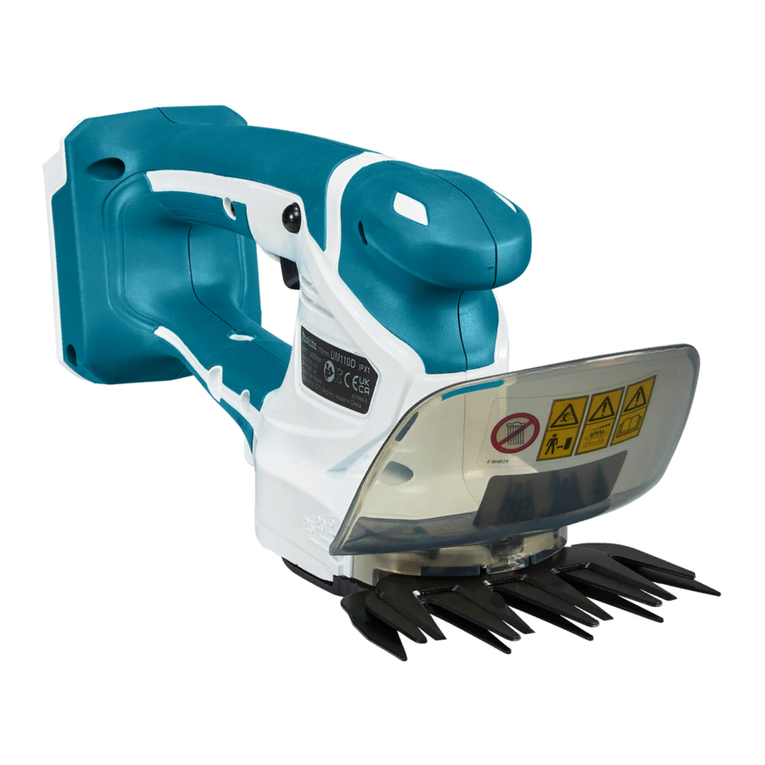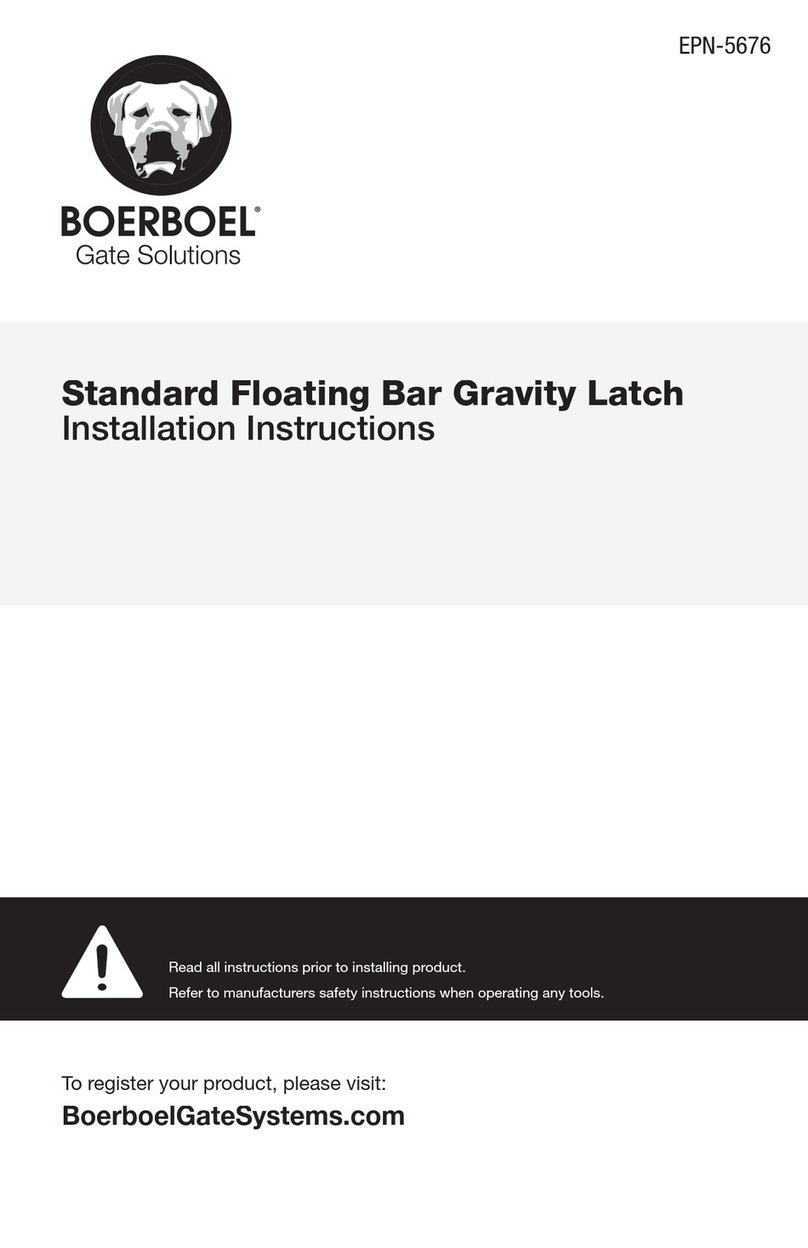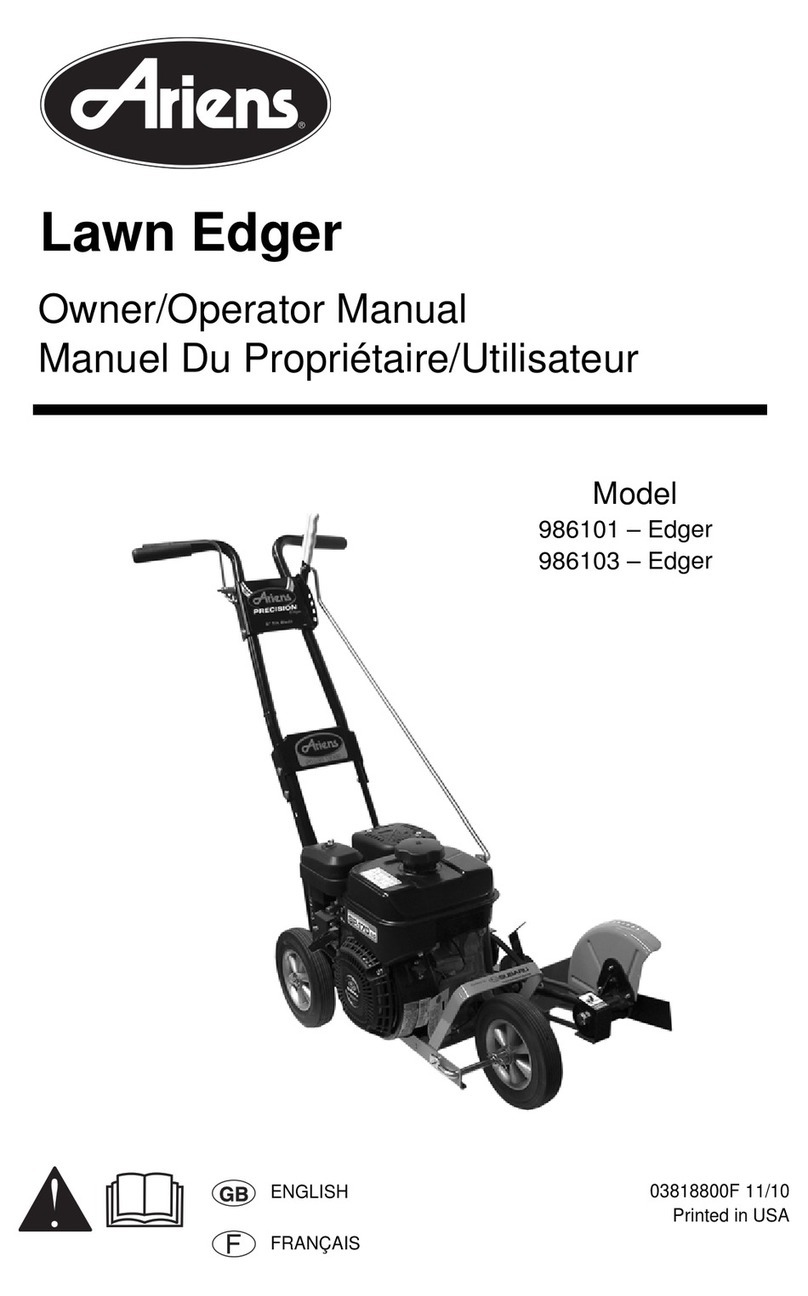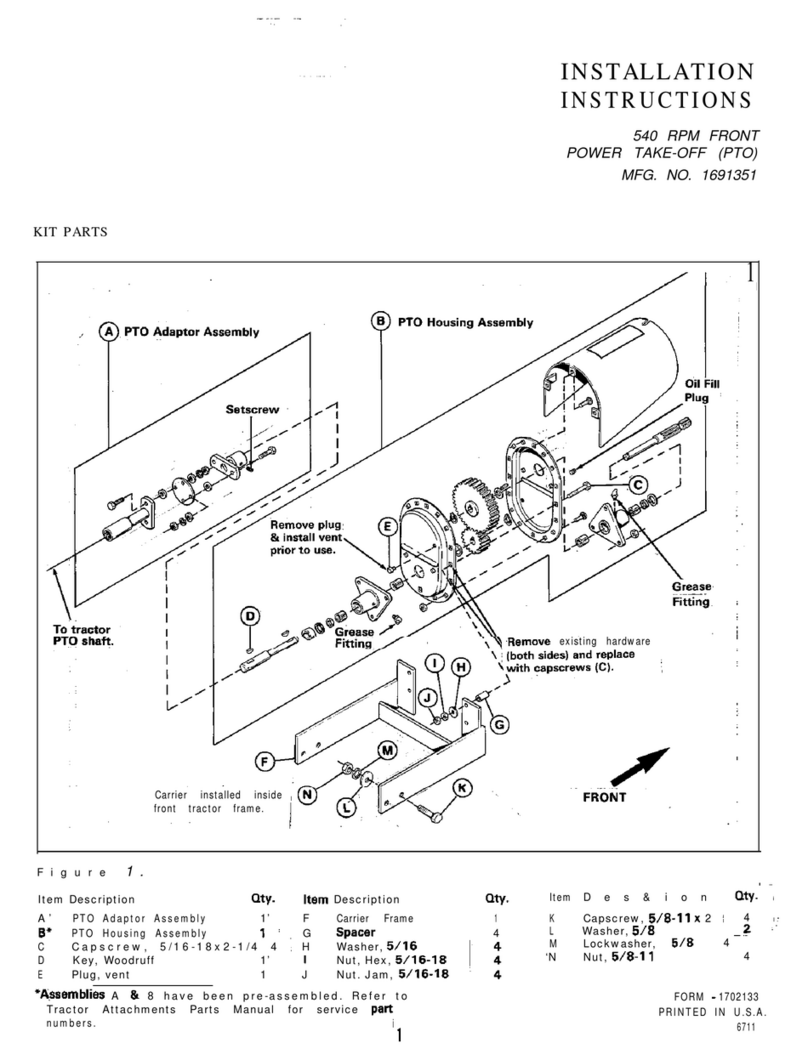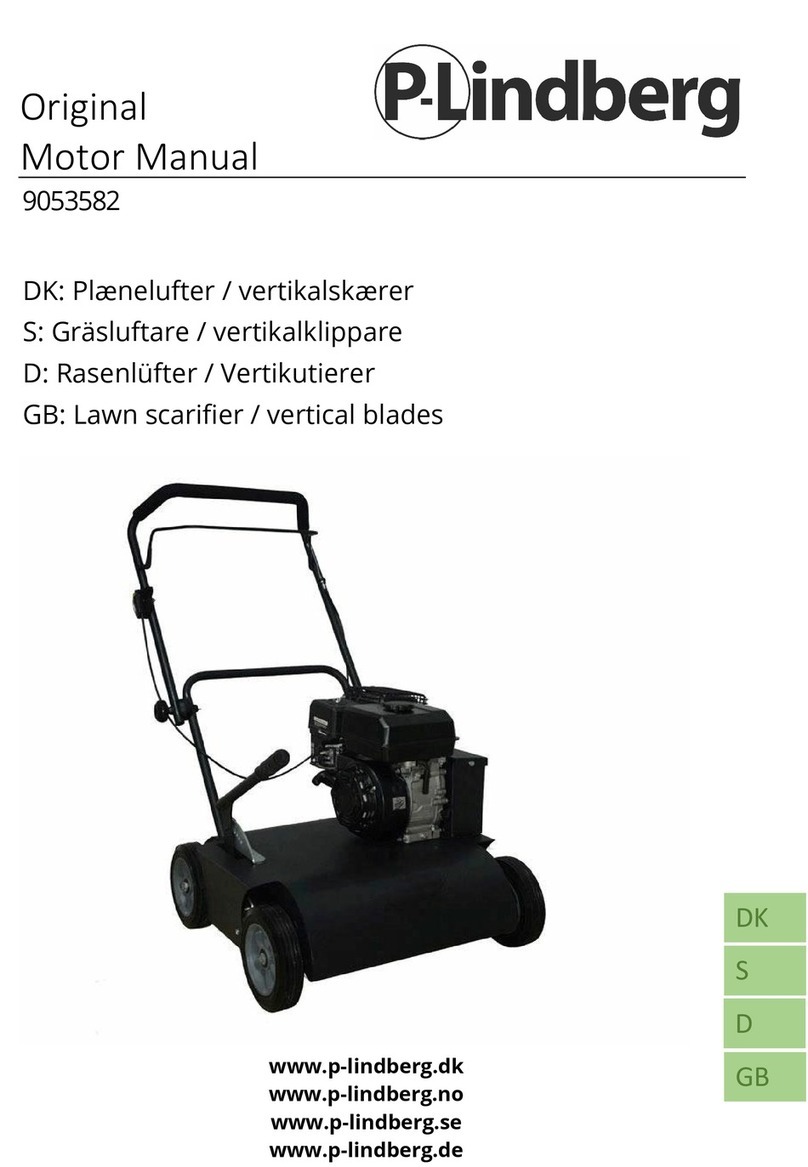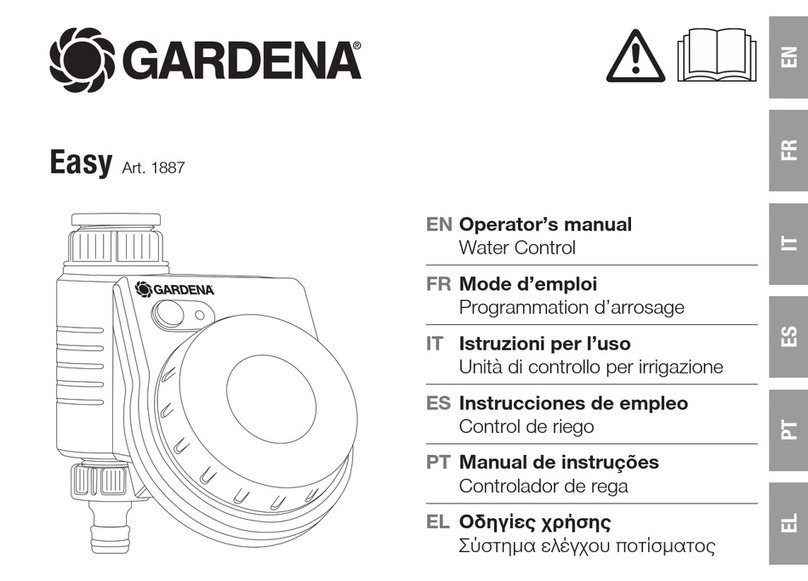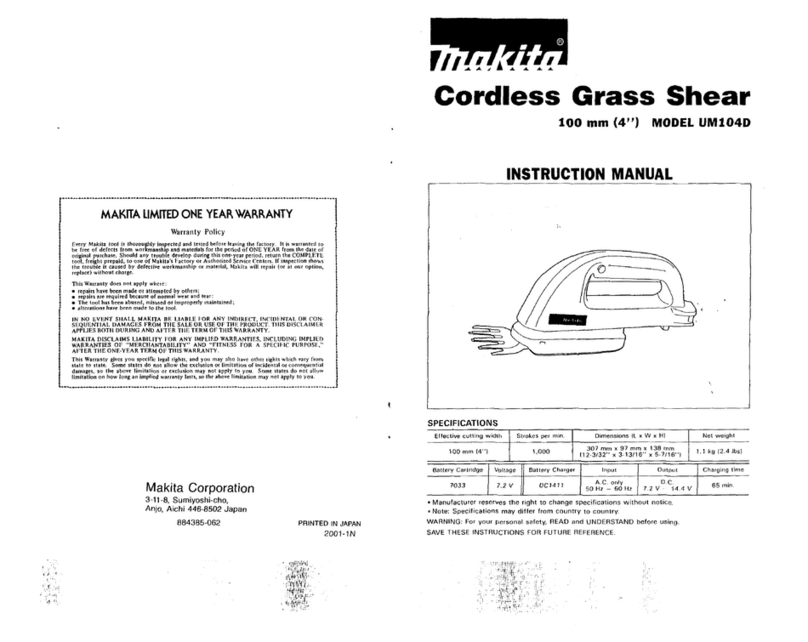
6
Stop the engine (motor) and wait until the blade comes
to a complete stop before cleaning the machine,
removing grass catcher, or unclogging the discharge
guard.
Slow down before turning.
If you strike a foreign object, stop and inspect the
machine. Repair, if necessary, before restarting.
NEVER leave a running machine unattended. ALWAYS
turn off blade(s), set parking brake, stop engine and
remove key before dismounting.
Disengage blade(s) when not mowing. Shut off engine
and wait for all parts to come to a complete stop before
cleaning the machine, removing the grass catcher, or
unclogging the discharge guard.
Know the weight of loads. Limit loads to those you can
safely control and the unit can safely handle.
Operating Conditions
ALWAYS check overhead and side clearances carefully
before operation.
Watch for traffic when operating near or crossing
roadways.
Clear the area of objects such as rocks, wire, toys, etc.,
which could be thrown by the blades.
Check for weak spots on docks, ramps or floors. Avoid
uneven work areas and rough terrain. Stay alert for
hidden hazards or traffic.
Use care when approaching blind corners, shrubs, trees
or other objects that may obscure vision.
Dust, smoke, fog, etc. can reduce vision and cause an
accident.
Operate machine only in daylight or good artificial light.
Slope Operation
Slopes are a major factor related to loss of control and
tip-over accidents, which can result in severe injury or
death. Operation on all slopes requires extra caution. If
you cannot back up the slope or if you feel uneasy on it,
DO NOT mow it.
DO NOT operate on slopes of more than 10°.
Mow up and down slopes, not across.
Watch for holes, ruts, bumps, rocks, or other hidden
objects. Uneven terrain could overturn the machine. Tall
grass can hide obstacles.
DO NOT mow on moist or wet grass. Tires may lose
traction causing a loss of control.
Use extra care while operating machine with grass
catchers or other attachments; they can affect the
stability of the machine. DO NOT use on steep slopes.
Keep all movements on the slope slow and gradual. DO
NOT make sudden changes in speed or direction, which
could cause the machine to roll over.
Avoid starting, stopping, or turning on a slope. If the
tires lose traction, disengage the blade(s) and proceed
slowly straight down the slope.
Operation on slopes may lead to loss of steering
control. When operating on slopes be prepared to react
to an emergency situation:
• Return steering levers to neutral position.
• Immediately set parking brake.
• Turn off PTO and engine.
DO NOT try to stabilize the machine by putting your foot
on the ground.
DO NOT park on slopes unless necessary. When
parking on slope ALWAYS chock or block wheels.
ALWAYS set parking brake.
Choose a low ground speed so you will not have to stop
or shift while on a slope.
DO NOT mow near drop-offs, ditches, or embankments.
The machine could suddenly roll over if a wheel goes
over the edge or if the edge caves in.
DO NOT bypass transmission or allow transmission to
free-wheel when on a slope.
Fuel
To avoid personal injury or property damage, use
extreme care in handling gasoline. Gasoline is
extremely flammable and the vapors are explosive.
Ethanol blends must not exceed E10. Higher ethanol
content may cause your machine to run hotter and
damage your engine.
Replace fuel cap securely and clean up spilled fuel
before starting engine.
Extinguish all cigarettes, cigars, pipes and other sources
of ignition.
Use only an approved gasoline container.
NEVER store the machine or fuel container where there
is an open flame, spark or pilot light such as on a water
or space heater or other appliances.
NEVER fill containers inside a vehicle or on a truck or
trailer bed with a plastic liner. ALWAYS place containers
on the ground away from your vehicle before filling.
NEVER fuel the machine indoors.
NEVER remove gas cap or add fuel with the engine
running. Allow engine to cool before fueling.
Fuel is highly flammable and its vapors are explosive.
Handle with care. Use only an approved gasoline
container with an appropriately-sized dispensing spout.
NO smoking, NO sparks, NO flames.
